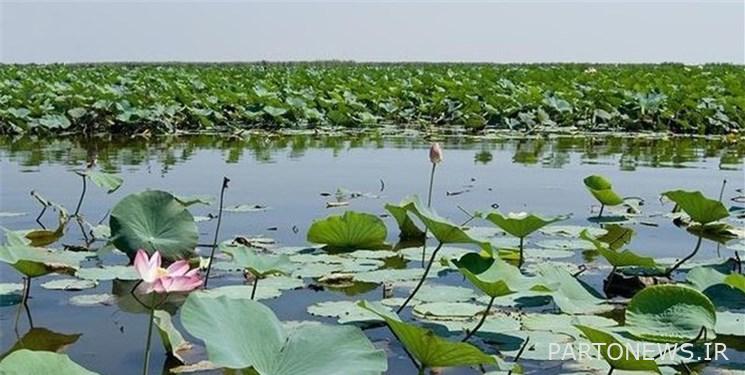Everyone’s participation is necessary to completely clean the water hyacinth from Anzali International Wetland + video

According to Fars news agency’s community group, Hamzeh Ashuri, director general of environmental protection in Gilan, said: In recent days, environmental protection experts of the province have investigated and monitored the Anzali International Wetland, and it has been observed that a large amount of invasive water hyacinth plants are floating on the water in parts of the wetland. And it has given a very unpleasant effect to the lagoon.
He added: Further investigations showed that the source of the spread of this aquatic invasive plant in the wetland is passenger motor boats, which, due to the current water depth of the wetland, enter the water hyacinth clumps, and this unwanted traffic causes the water hyacinth bushes to be separated from the main clump and in parts The western and central wetlands are spread widely.
The Director General of Environmental Protection of Gilan further added: Although many of these bushes eventually enter the Caspian Sea through the water flow and rivers flowing in the wetland and cause problems for the users of the estuary and the sea, some of these bushes may come from the wetland. Do not go out and contaminate the parts free of this plant in the wetland.
Warning about the consequences of doing this, Ashuri asked the communities that use Anzali International Wetland to work with environmentalists to collect water hyacinth and remove this invasive plant from the wetland, because now is the best time to deal with this invasive plant and water hyacinths They have not yet started to propagate widely.
This responsible official emphasized: cutting water hyacinths into pieces and leaving them in water areas will only cause new and more parts of the wetland to be polluted.
He further added: This action is actually a temporary and short-term action because in the coming months of low rainfall, when the water depth of the wetland and these areas will decrease, this plant will cover those areas again with its power of sexual and asexual reproduction. Therefore, the best action is to collect the whole plant and remove it from the wetland.
end of message/
You can edit this article
Suggest this article for the first page

